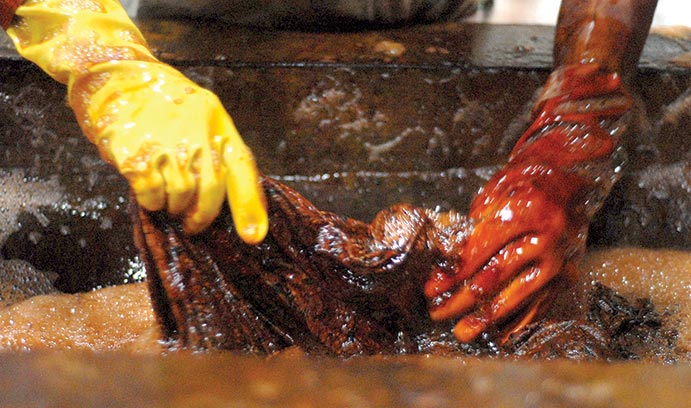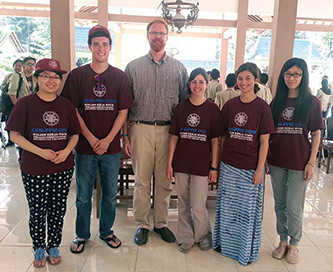Solving Problems in Indonesia

Interns incorporated batik-industry issues into their work. Batik, the ancient art of using wax to create patterns while dyeing fabric, is a significant component of Indonesian tradition.
The Indonesian Internships for Community Development, Evaluation, and Research give students a “real-world, hands-on experience in economically disadvantaged, marginalized, culturally diverse communities,” says Alexander Wiseman, associate professor of Comparative and International Education. “You can talk about what it’s like to live and work in communities like this in the classroom, but until you do it, you really don’t get it.”
Five Lehigh students now “get it,” thanks to their eight-week experience living and working in a rural Indonesian village this summer.
The internships developed out of Lehigh’s long-standing relationship with the Universitas Gadjah Mada, located in Yogyakarta City, Indonesia. Led by Wiseman and Stacy Burger, assistant director of international services, interns operated within the existing structures of UGM’s required community service program for third-year students.
Intentionally designed to allow students autonomy in the scope of their projects, the internships resemble the operation of an international non-governmental organization. Students from both universities divided into groups based on areas of interest. Then, they worked together to identify problems within the community and develop solutions, often with remarkably limited resources.
Leidy Guzman ’16 used what she’s learned in her behavioral neuroscience coursework to focus on health care. Guzman surveyed local people and prepared a presentation to raise awareness about their most pressing health issues. Guzman also educated locals about the health risks associated with burning trash and presented alternatives.
Xia Zhao, a second-year doctoral student, designed curricula, assisted in preschools, and taught English and life skills to school-aged children. Cole Knisley ’16 also taught English, cleverly using a travel guidebook written in both Indonesian and English to cover a different topic each day. Knisley also created posters to educate children about the dangers of smoking.
“Everything was new and challenging,” says Zhao. Wiseman believes that such challenges enabled students to learn that “it’s not always so easy to solve problems.”
Many Universitas Gadjah Mada students focused their work within the batik-making industry. Batik, the ancient art of using wax to create patterns while dyeing fabric, is a significant component of Indonesian tradition. Some Lehigh interns incorporated batik-industry issues into their work. For instance, Guzman addressed dye-related skin rashes with factory workers and Zhao and Knisley’s language instruction considered the importance of English to successful tourism work and batik sales.
“Experience-wise, you can’t really get any better than this if you want to work in development for an organization that does that kind of work,” says Wiseman. “It’s often very hard to get into these kinds of communities, to have this kind of freedom or latitude to decide on your projects.”
Posted on:


